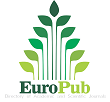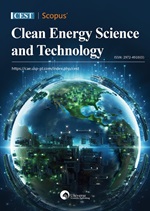Arsenic in rice: An emerging challenge in context of food security
DOI:
https://doi.org/10.18686/fnc.v1i1.1Keywords:
rice; arsenic; health threat; food safety; metabolic disordersAbstract
Arsenic speciation in food and diet was assessed for human exposure through dietary approaches because it seems as a critical public health issue all over the world. Globally, rice is a vital commodity in world hunger and vastly important for survival of human race. Rice is widely used for the formulation of baby formulas, breakfast cereals, bread, cookies, cakes, rice drinks and other foodstuff. Arsenic is concentrated at higher rates in rice grains and containing more than 85% of total arsenic forms that poses serious health aliments o human as well as animal life on the planet. Meanwhile, Arsenic contaminated water and soil may induce hazardous affects to humans through water-soil-plant pathway.
Downloads
Published
How to Cite
Issue
Section
License
Copyright (c) 2023 Rebia Ejaz, Mian Kamran Sharif, Aysha Sameen, Rizwana Batool, Saima Tehseen, Mahwash Aziz

This work is licensed under a Creative Commons Attribution-NonCommercial 4.0 International License.
References
1. Karagas MR, Punshon T, Davis M, et al. Rice intake and emerging concerns on arsenic in rice: A review of the human evidence and methodologic challenges. Current Environmental Health Reports 2019; 6(4): 361–372. doi: 10.1007/s40572-019-00249-1
2. Sohn E. Contamination: The toxic side of rice. Nature 2014; 514(7524): S62–S63. doi: 10.1038/514s62a
3. Punshon T, Jackson BP, Meharg AA, et al. Understanding arsenic dynamics in agronomic systems to predict and prevent uptake by crop plants. Science of The Total Environment 2017; 581-582: 209–220. doi: 10.1016/j.scitotenv.2016.12.111
4. Yuan ZF, Gustave W, Boyle J, et al. Arsenic behavior across soil-water interfaces in paddy soils: Coupling, decoupling and speciation. Chemosphere 2021; 269: 128713. doi: 10.1016/j.chemosphere.2020.128713
5. Islam SF, de Neergaard A, Sander BO, et al. Reducing greenhouse gas emissions and grain arsenic and lead levels without compromising yield in organically produced rice. Agriculture, Ecosystems & Environment 2020; 295: 106922. doi: 10.1016/j.agee.2020.106922
6. Rokonuzzaman M, Li WC, Man YB, et al. Arsenic accumulation in rice: Sources, human health impact and probable mitigation approaches. Rice Science 2022; 29(4): 309–327. doi: 10.1016/j.rsci.2022.02.002
7. Gousul Azam SMG, Afrin S, Naz S. Arsenic in cereals, their relation with human health risk, and possible mitigation strategies. Food Reviews International 2016; 33(6): 620–643. doi: 10.1080/87559129.2016.1210633
8. Majumder S, Banik P. Geographical variation of arsenic distribution in paddy soil, rice and rice-based products: A meta-analytic approach and implications to human health. Journal of Environmental Management 2019; 233: 184–199. doi: 10.1016/j.jenvman.2018.12.034
9. IARC (International Agency for Research on Cancer). Arsenic and arsenic compounds. In IARC Monographs on the Evaluation of Carcinogenic Risks to Humans. Arsenic, Metals, Fibres and Dusts 2012, 100: 41–94.
10. Chen Y, Han YH, Cao Y, et al. Arsenic transport in rice and biological solutions to reduce arsenic risk from rice. Frontiers in Plant Science 2017; 8. doi: 10.3389/fpls.2017.00268
11. Cubadda F, Jackson BP, Cottingham KL, et al. Human exposure to dietary inorganic arsenic and other arsenic species: State of knowledge, gaps and uncertainties. Science of The Total Environment 2017; 579: 1228–1239. doi: 10.1016/j.scitotenv.2016.11.108
12. Watson C, Gustave W. Prevalence of arsenic contamination in rice and the potential health risks to the Bahamian population—A preliminary study. Frontiers in Environmental Science 2022; 10. doi: 10.3389/fenvs.2022.1011785
13. Shri M, Dave R, Diwedi S, et al. Heterologous expression of Ceratophyllum demersum phytochelatin synthase, CdPCS1, in rice leads to lower arsenic accumulation in grain. Scientific Reports 2014; 4(1). doi: 10.1038/srep05784
14. Zhang J, Zhao QZ, Duan GL, et al. Influence of sulphur on arsenic accumulation and metabolism in rice seedlings. Environmental and Experimental Botany 2011; 72(1): 34–40. doi: 10.1016/j.envexpbot.2010.05.007
15. Shraim AM. Rice is a potential dietary source of not only arsenic but also other toxic elements like lead and chromium. Arabian Journal of Chemistry 2017; 10: S3434–S3443. doi: 10.1016/j.arabjc.2014.02.004
16. Carbonell-Barrachina Á, Munera-Picazo S, Cano-Lamadrid M, et al. Arsenic in your food: Potential health hazards from arsenic found in rice. Nutrition and Dietary Supplements 2015. doi: 10.2147/nds.s52027
17. Dai J, Tang Z, Gao AX, et al. Widespread occurrence of the highly toxic Dimethylated Monothioarsenate (DMMTA) in rice globally. Environmental Science & Technology 2022; 56(6): 3575–3586. doi: 10.1021/acs.est.1c08394
18. European Food Safety Authority (EFSA), Arcella D, Cascio C, et al. Chronic dietary exposure to inorganic arsenic. EFS2 2021; 19(1). doi: 10.2903/j.efsa.2021.6380
19. Codex Alimentarius Commission. Report of the Eighth Session of the Codex Committee on Contaminants in Foods. Codex Alimentarius Commission; 2014.
20. Djahed B, Taghavi M, Farzadkia M, et al. Stochastic exposure and health risk assessment of rice contamination to the heavy metals in the market of Iranshahr, Iran. Food and Chemical Toxicology 2018; 115: 405–412. doi: 10.1016/j.fct.2018.03.040
21. Rintala EM, Ekholm P, Koivisto P, et al. The intake of inorganic arsenic from long grain rice and rice-based baby food in Finland—Low safety margin warrants follow up. Food Chemistry 2014; 150: 199–205. doi: 10.1016/j.foodchem.2013.10.155
22. Sanchez TR, Oelsner EC, Lederer DJ, et al. Rice Consumption and subclinical lung disease in US adults: Observational evidence from the multi-ethnic study of atherosclerosis. American Journal of Epidemiology 2019; 188(9): 1655–1665. doi: 10.1093/aje/kwz137
23. FAO/WHO. Report of the Eighth Session of the Codex Committee on Contaminants in Foods, The Hague. FAO/WHO; 2014.
24. Liu M, Zhang Q, Cheng M, et al. Rice life cycle-based global mercury biotransport and human methylmercury exposure. Nature Communications 2019; 10(1). doi: 10.1038/s41467-019-13221-2
25. Clever J, Ma J. China, Peoples Republic of FAIRS Product Specific Maximum Levels of Contaminants in Foods. United States Department of Agriculture Foreign Agricultural Service; 2006.
26. Chaney RL, Kim WI, Kunhikrishnan A, et al. Integrated management strategies for arsenic and cadmium in rice paddy environments. Geoderma 2016; 270: 1–2. doi: 10.1016/j.geoderma.2016.03.001
27. Chaney RL. How does contamination of rice soils with Cd and Zn cause high incidence of human Cd disease in subsistence rice farmers. Current Pollution Reports 2015; 1(1): 13–22. doi: 10.1007/s40726-015-0002-4
28. Yin N, Wang P, Li Y, et al. Arsenic in rice bran products: In vitro oral bioaccessibility, arsenic transformation by human gut microbiota, and human health risk assessment. Journal of Agricultural and Food Chemistry 2019; 67(17): 4987–4994. doi: 10.1021/acs.jafc.9b02008
29. Naito S, Matsumoto E, Shindoh K, et al. Effects of polishing, cooking, and storing on total arsenic and arsenic species concentrations in rice cultivated in Japan. Food Chemistry 2015; 168: 294–301. doi: 10.1016/j.foodchem.2014.07.060
30. EFSA (European Food Safety Authority). Scientific Opinion on Arsenic in Food. EFSA Panel on Contaminants in the Food Chain. EFSA; 2010.
31. Sofuoglu SC, Güzelkaya H, Akgül Ö, et al. Speciated arsenic concentrations, exposure, and associated health risks for rice and bulgur. Food and Chemical Toxicology 2014; 64: 184–191. doi: 10.1016/j.fct.2013.11.029
32. González N, Calderón J, Rúbies A, et al. Dietary exposure to total and inorganic arsenic via rice and rice-based products consumption. Food and Chemical Toxicology 2020; 141: 111420. doi: 10.1016/j.fct.2020.111420
33. Nunes LM, Li G, Chen WQ, et al. Embedded health risk from arsenic in globally traded rice. Environmental Science & Technology 2022; 56(10): 6415–6425. doi: 10.1021/acs.est.1c08238
34. Narukawa T, Chiba K, Sinaviwat S, et al. A rapid monitoring method for inorganic arsenic in rice flour using reversed phase-high performance liquid chromatography-inductively coupled plasma mass spectrometry. Journal of Chromatography A 2017; 1479: 129–136. doi: 10.1016/j.chroma.2016.12.001
35. Chen H, Tang Z, Wang P, et al. Geographical variations of cadmium and arsenic concentrations and arsenic speciation in Chinese rice. Environmental Pollution 2018; 238: 482–490. doi: 10.1016/j.envpol.2018.03.048
36. Moreno-Jiménez E, Meharg AA, Smolders E, et al. Sprinkler irrigation of rice fields reduces grain arsenic but enhances cadmium. Science of The Total Environment 2014; 485–486: 468-473. doi: 10.1016/j.scitotenv.2014.03.106
37. Vodyanitskii YN. Standards for the contents of heavy metals in soils of some states. Annals of Agrarian Science 2016; 14(3): 257–263. doi: 10.1016/j.aasci.2016.08.011
38. Oberoi S, Devleesschauwer B, Gibb HJ, et al. Global burden of cancer and coronary heart disease resulting from dietary exposure to arsenic, 2015. Environmental Research 2019; 171: 185–192. doi: 10.1016/j.envres.2019.01.025
39. Taylor V, Goodale B, Raab A, et al. Human exposure to organic arsenic species from seafood. Science of The Total Environment 2017; 580: 266–282. doi: 10.1016/j.scitotenv.2016.12.113
40. Arıkan S, Dölgen D, Alpaslan M. Adsorptive removal of arsenic from aqueous solutions by iron oxide coated natural materials. Arsenic Research and Global Sustainability 2016: 476–477. doi: 10.1201/b20466-221




.jpg)
.jpg)

